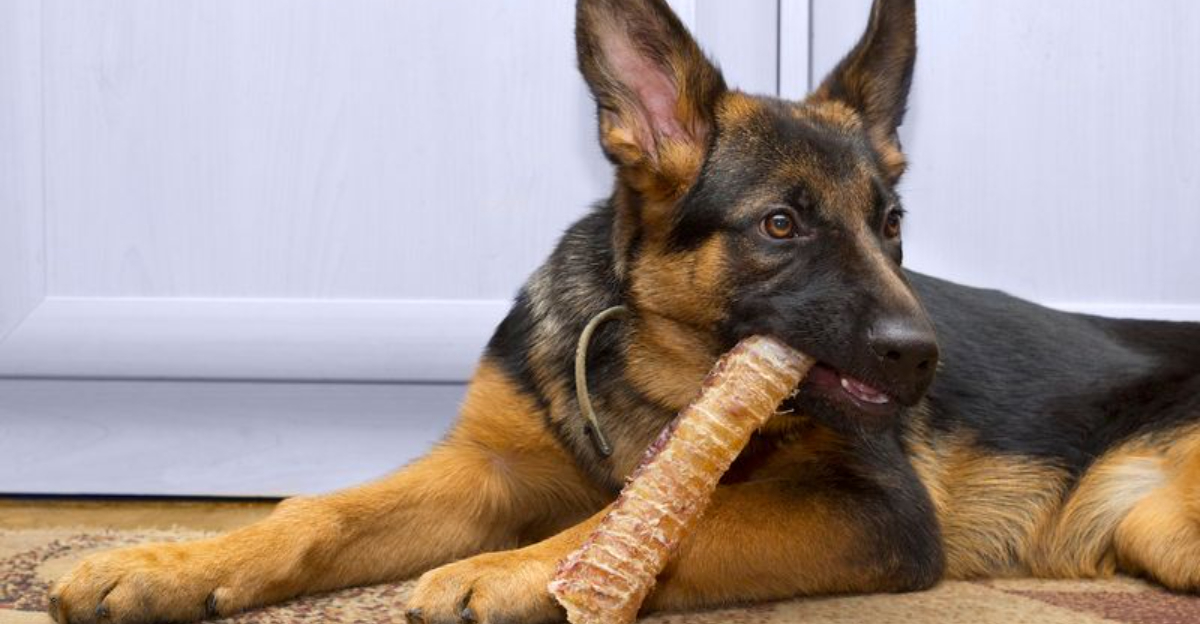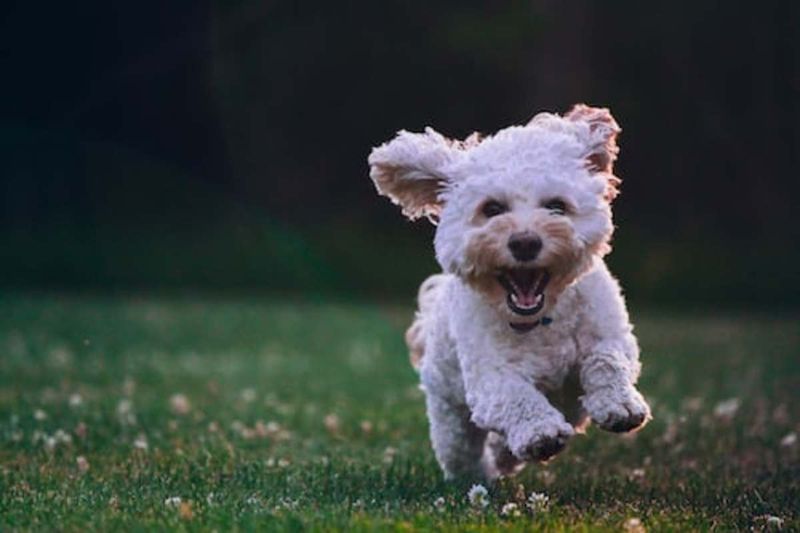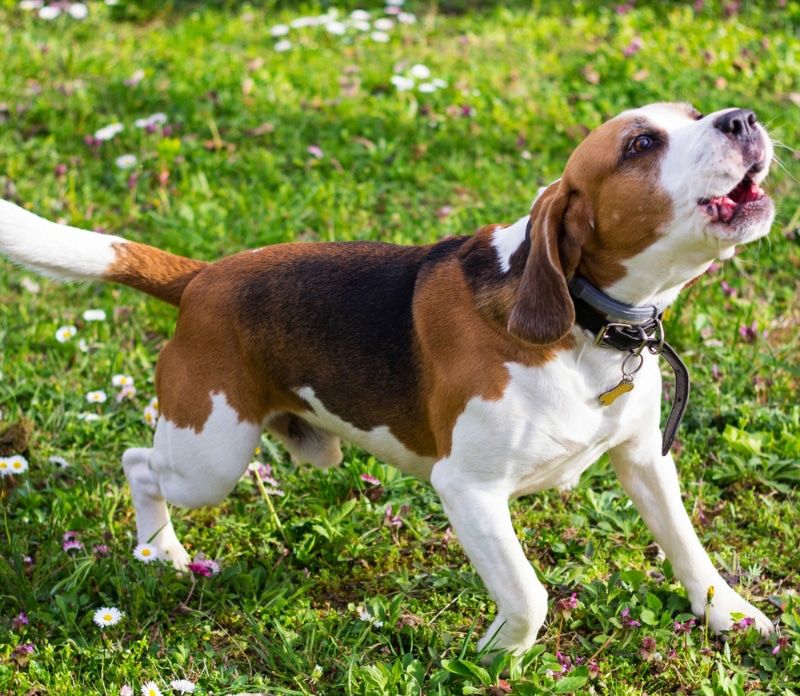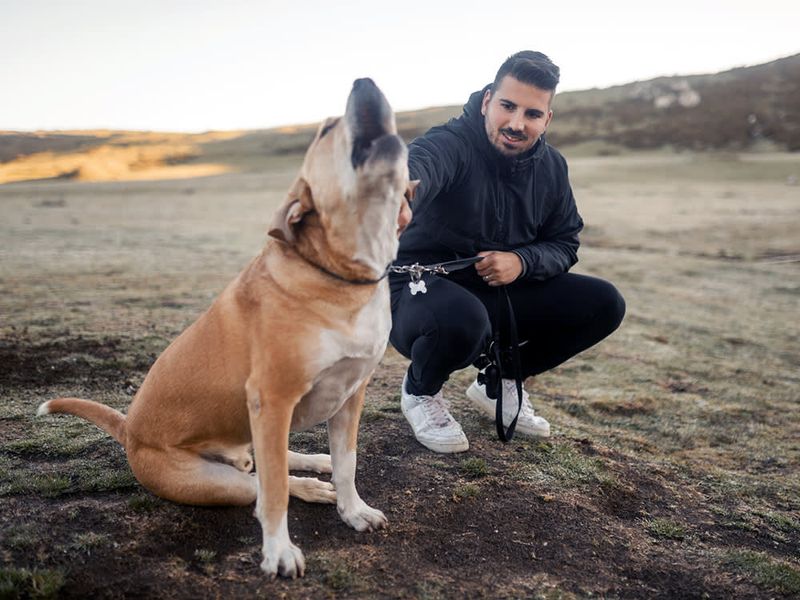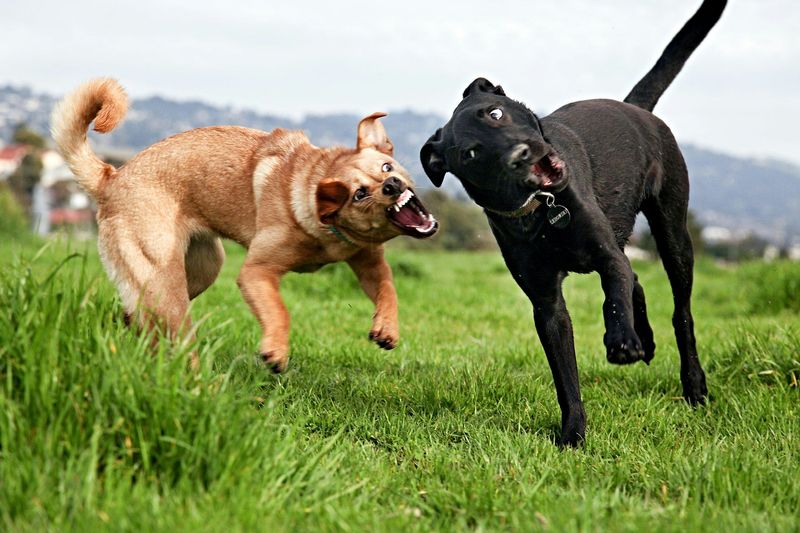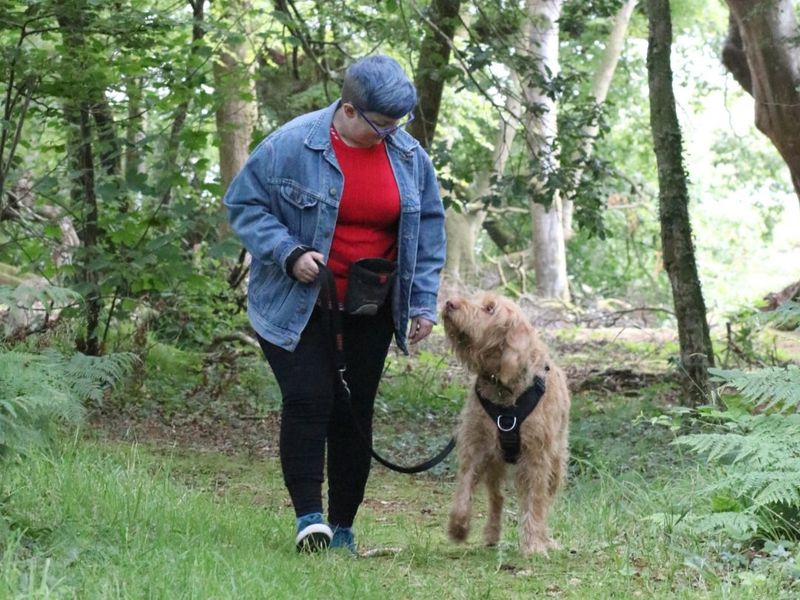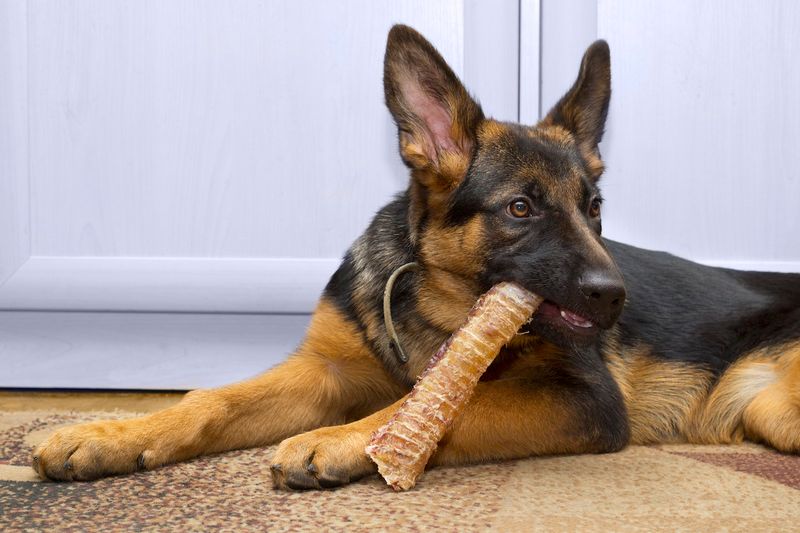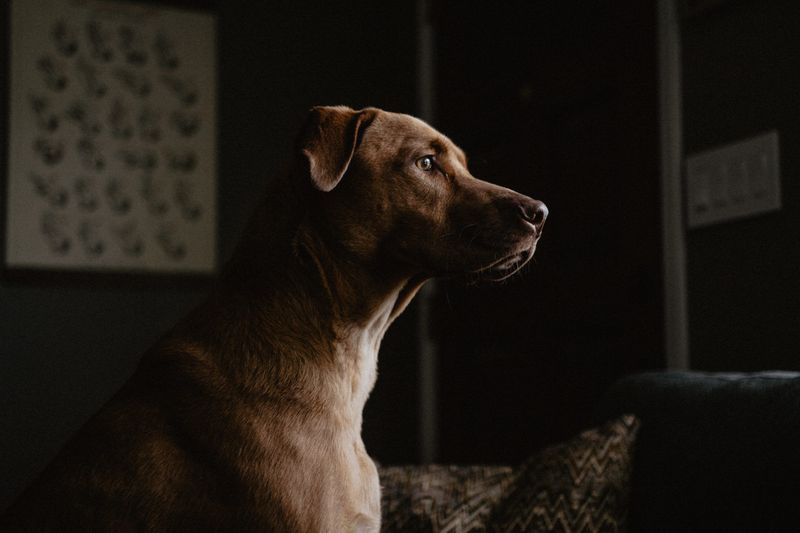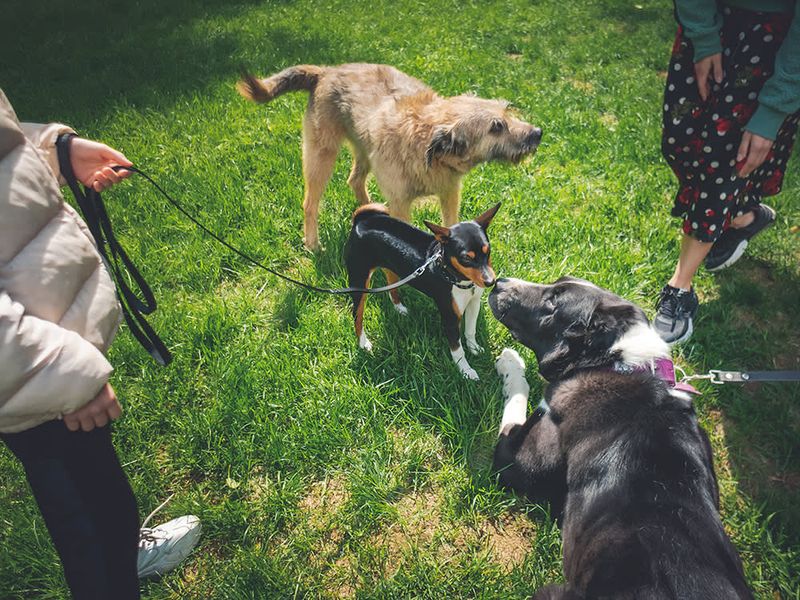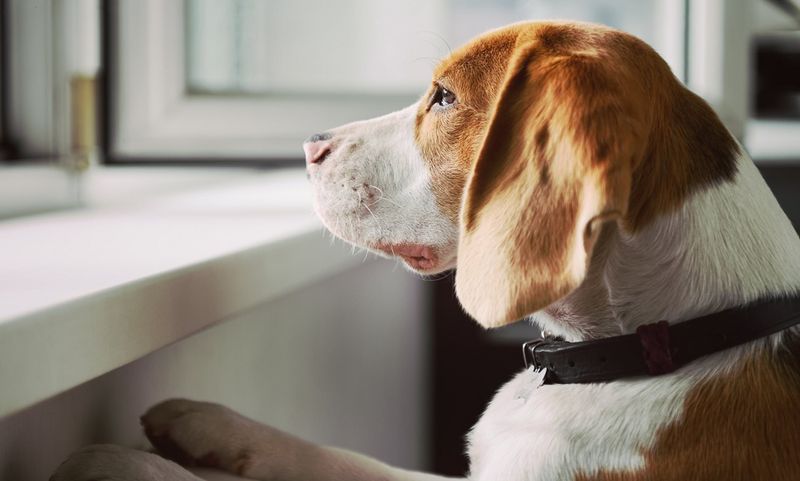Understanding the behavioral indicators that your adolescent dog may become reactive is crucial for any pet owner. Reactivity, often mistaken for aggression, is a heightened response to certain stimuli, such as other dogs, people, or noises. Recognizing these signs early can help in addressing and managing the issue effectively, ensuring a more harmonious life for both you and your pet. Here are ten trainer-approved red flags that your teen dog may exhibit signs of reactivity.
Overexcitement Around New Stimuli
Ever notice how your teen dog seems to turn into a bundle of energy at the mere sight of a new toy or person? Overexcitement is a common red flag. Excitement in dogs is natural, but when your teen canine can’t seem to contain it, it might be signaling future reactivity issues. In social settings, this could mean barking excessively or jumping uncontrollably. Pay attention to these behaviors. The earlier you address them, the better. It’s like teaching a child to handle excitement on a birthday morning. Channel that energy constructively.
Increased Barking and Vocalization
Does your young dog have a lot to say, especially at seemingly random times? Increased barking is another indicator. While all dogs bark, a noticeable uptick in vocalizations, especially in response to everyday occurrences, can signal reactivity. This form of communication might be more than just a call for attention. It may indicate anxiety or fear. Consider it your pet’s way of expressing discomfort or uncertainty. Addressing these barking patterns early on can prevent them from becoming ingrained habits. It’s like curbing chatter in a classroom—necessary for peace.
Heightened Sensitivity to Sounds
Is your dog constantly alert to every sound, no matter how insignificant? Dogs that react strongly to auditory stimuli might be showing signs of future reactivity. This sensitivity can manifest as startling easily or an inability to calm down after hearing a noise. Imagine living in a world where every tiny sound is amplified. It’s stressful, right? Helping your dog manage this can prevent future anxiety. Providing a calm environment and gradually desensitizing them to sounds is key. It’s akin to adjusting to city life after living in the quiet countryside.
Aggressive Play Behavior
Does playtime often escalate into something more intense? Aggressive play can be a precursor to reactivity. When your dog plays too roughly or doesn’t know when to stop, it may be a sign of underlying issues. This behavior isn’t just roughhousing; it could be an indication of poor social skills. Consider structured play sessions to teach boundaries. Imagine a toddler learning to share toys; it’s a process requiring patience and guidance. Early intervention in play habits can lead to healthier interactions with both people and pets.
Persistent Pulling on Leash
Does your dog insist on leading the way during walks? Persistent pulling on the leash is more than just a nuisance; it can indicate reactivity. A dog that pulls excessively may be reacting to its environment with excitement or stress. The world is full of distractions and temptations for a curious dog. Teaching leash manners early on can prevent this behavior from escalating. Imagine teaching a child to walk calmly through a candy store—challenging but possible with patience and consistency. Early training is essential for enjoyable walks.
Avoidance of Eye Contact
Have you noticed your teen dog avoiding eye contact with you or others? While some dogs are naturally shy, persistent avoidance can be a red flag for reactivity. It’s a subtle sign, often overlooked, but important. This behavior can indicate discomfort or fear, paving the way for reactive tendencies. Think of it like a child avoiding a teacher’s gaze when unsure. Building confidence through positive interactions is crucial. Encouraging gentle eye contact can help build trust and reduce anxiety, fostering a stronger bond between you and your pet.
Guarding Food or Toys
Does your dog become overly protective of its food or toys? Resource guarding is a significant red flag. This behavior, rooted in instinct, can lead to reactivity if not addressed. A dog that guards its resources might show growling or snapping. Think of it as a child unwilling to share their favorite toy. Working on this behavior requires patience and positive reinforcement. Teaching your dog that sharing or surrendering items doesn’t mean loss is key. Early intervention can transform guarding into generosity.
Frequent Changes in Mood
Have you observed your dog’s mood swinging unpredictably? Frequent mood changes can hint at underlying reactivity issues. One moment playful, the next withdrawn—such behavior can be confusing for owners. Imagine a friend whose mood shifts without warning; it’s challenging to navigate. Understanding these emotional changes is crucial for providing support. Consistent routines and environments help stabilize moods. It’s like setting a steady rhythm to a song—essential for harmony. Monitoring these fluctuations can guide you in offering the right support to your pet.
Reluctance to Meet New People
Does your dog back away when approached by strangers? Reluctance to meet new people is a common red flag. This hesitation can be rooted in fear or anxiety, leading to potential reactivity. Imagine starting a new school and being wary of classmates—a similar sentiment for dogs. Encouraging gentle introductions and rewarding brave interactions can help. It’s about building trust and ensuring your dog feels safe around new faces. Addressing this early on encourages positive social experiences throughout your dog’s life.
Pacing and Restlessness
Does your teen dog seem unable to settle, constantly pacing or appearing restless? This behavior can be a clear warning sign of reactivity. Restlessness might indicate underlying anxiety or discomfort. Imagine a person unable to relax before a big event. Helping your dog find calm amidst chaos is essential. Providing a structured environment with plenty of exercise and mental stimulation can assist. It’s like creating a sanctuary in a bustling city—necessary for peace of mind. Early intervention can transform restlessness into relaxation.
